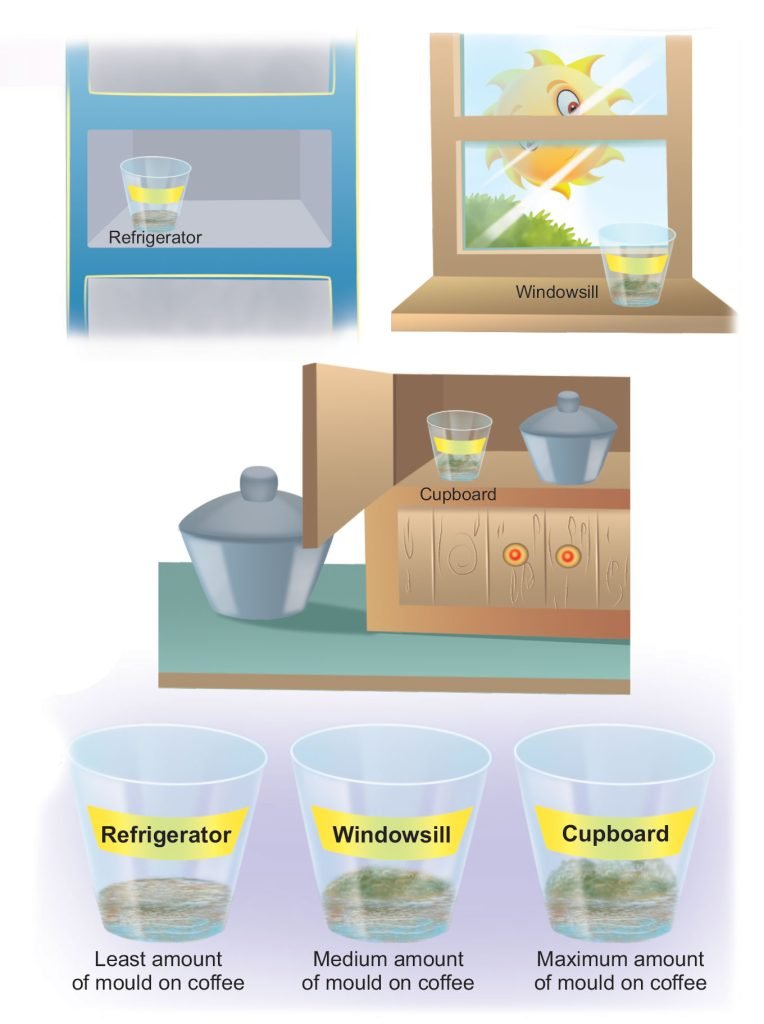
You will need:
- 3 cups
- Coffee or leftover food
- Magnifying glass
- Paper sheet (to record your findings)
Not all moulds are bad. Some moulds like the green or orange ones are penicillin moulds. Try this simple experiment to understand moulds.
INSTRUCTIONS
- Take 3 cups and pour some coffee into each cup. If you aren’t using coffee, you could also use a tablespoonful of leftover food
in each cup. - Place one cup on a windowsill where there is usually plenty of sunlight. Place the other cup in the refrigerator and finally the last cup in a dark area (a darkened kitchen cupboard will also do).
- Over a period of several days observe how quickly moulds grow on the food/coffee in the 3 cups.
- Record your findings based on the effect of temperature, light and humidity on the growth rate of moulds.
RESULT
You will notice that moulds appear and grow faster in the cup placed in the cupboard, than the one placed in direct sunlight. The cup placed in the refrigerator will have the slowest growth of moulds. This is because moulds cannot grow in lesser humid and cold temperatures (like the refrigerator). But they will grow fastest in more humid conditions with no access to direct sunlight, because moulds do not need direct sunlight to make their own food.

